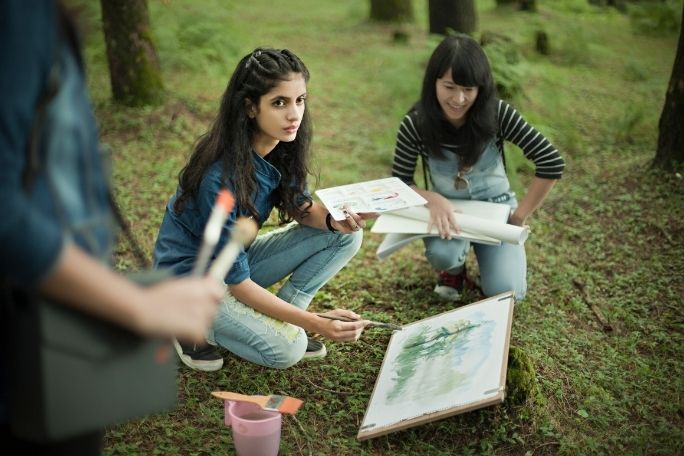Lesson summary
In this lesson, students are encouraged to question the place of art in our society. Using the driving question ‘can art inspire positive actions?’ your students will examine case studies of practising artists to understand and challenge their current perception of whether art can advance sustainability both environmentally and socially. They will then create an artwork inspired these case studies.
Learning intentions:
Students will...
- be able to justify their view on art's place in society
- understand how artists have attempted to create social change through their work
- be able to use drawing techniques to create works that comment on a social issue
- be able to articulate how they have represented an underlying message in their art.
Success criteria:
Students can...
- comment on whether artworks encourage people to make change
- choose and utilise appropriate art making techniques in their practice
- explain how they have attempted to convey a message in their art making.
Lesson guides and printables
Lesson details
Curriculum mapping
Australian Curriculum content descriptions:
Year 9 & 10 Visual Arts:
- Manipulate materials, techniques, technologies and processes to develop and represent their own artistic intentions (ACAVAM126).
- Develop and refine techniques and processes to represent ideas and subject matter (ACAVAM127).
- Plan and design artworks that represent artistic intention (ACAVAM128).
- Analyse a range of visual artworks from contemporary and past times to explore differing viewpoints and enrich their visual art-making, starting with Australian artworks, including those of Aboriginal and Torres Strait Islander Peoples, and consider international artworks (ACAVAR131).
Syllabus outcomes: VAS5.5, VAS5.6, VAS5.7, VAS5.8, VAS5.9, VAS5.10
General capabilities: Literacy, Critical and Creative Thinking.
Cross-curriculum priority: Sustainability.
Relevant parts of Year 9 & 10 achievement standards: Students evaluate artworks and displays from different cultures, times and places. They analyse connections between visual conventions, practices and viewpoints that represent their own and others’ ideas. Students manipulate materials, techniques and processes to develop and refine techniques and processes to represent ideas and subject matter in their artworks.
Unit of work: Creative Sustainability – Visual Arts – Year 9 & 10.
Time required: 90 mins.
Level of teacher scaffolding: Medium – seek relevant artworks prior to the lesson and facilitate class discussions.
Resources required
- Student Worksheet (one copy per student)
- Coloured pencils
- A4 paper (one piece per student, artist quality not required)
- Digital camera (optional)
- Computers/tablets to access the online worksheet or data projector, and group copies of 5-10 selected artists
Skills
This lesson is designed to build students’ competencies in the following skills:
- Communication
- Creativity
- Digital Literacy
- Problem Solving
- Collaboration
Additional info
Faber-Castell has long understood the importance of creativity to all people, especially to young people. It is also continuously searching for environmentally friendly processes and high-quality materials to enhance children’s creative experience throughout every development phase. For more information about Faber-Castell, click here.


Welcome back!
Don't have an account yet?
Log in with:
By signing up to Cool.org you consent and agree to Cool's privacy policy to
store, manage and process your personal information. To read more, please see
our privacy policy here(Opens in new tab).
Create your free Cool.org account.
Many of our resources are free, with an option to upgrade to Cool+ for premium content.
Already have an account?
Sign up with:
By signing up to Cool.org you consent and agree to Cool's privacy policy to
store, manage and process your personal information. To read more, please see
our privacy policy here(Opens in new tab).